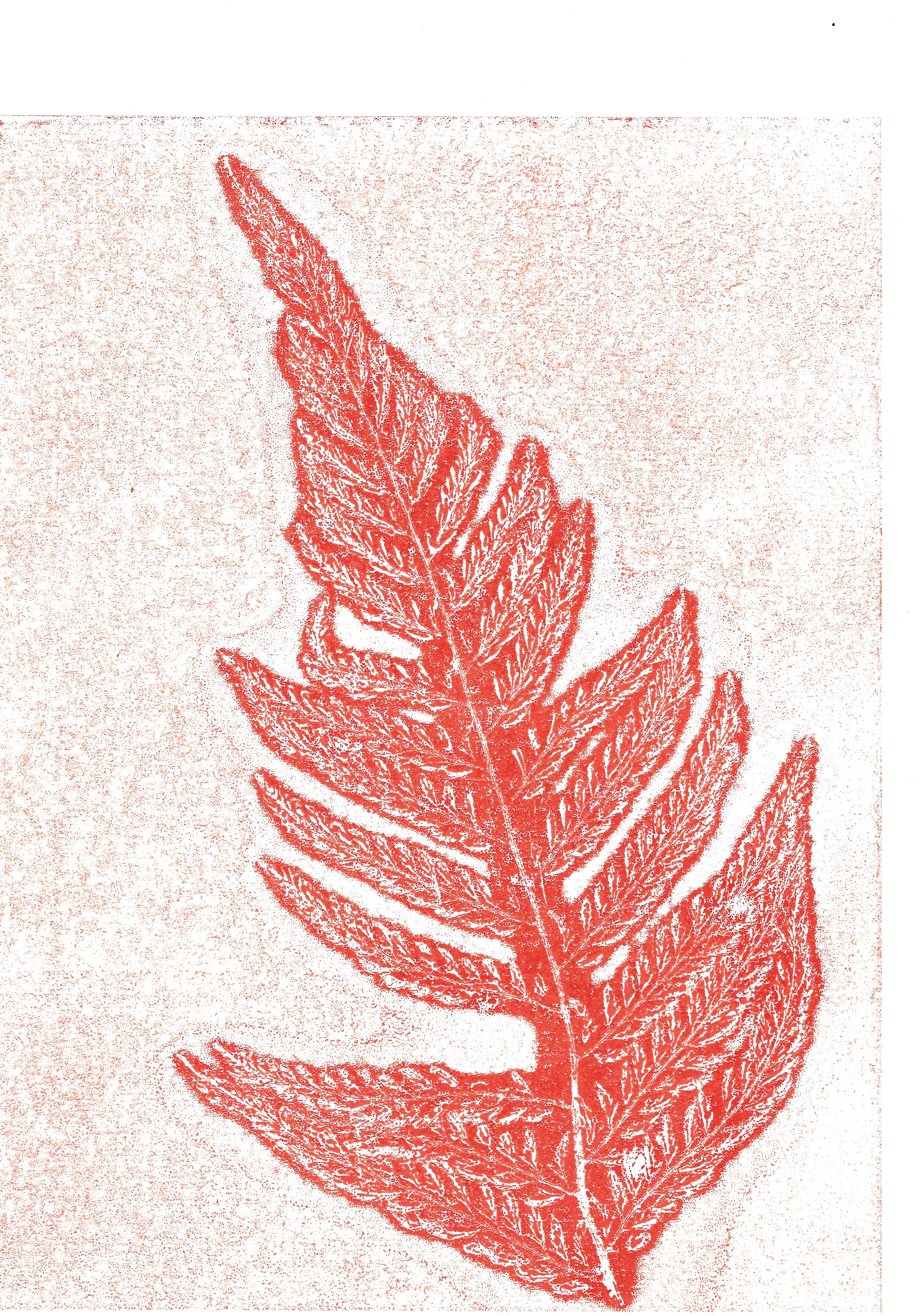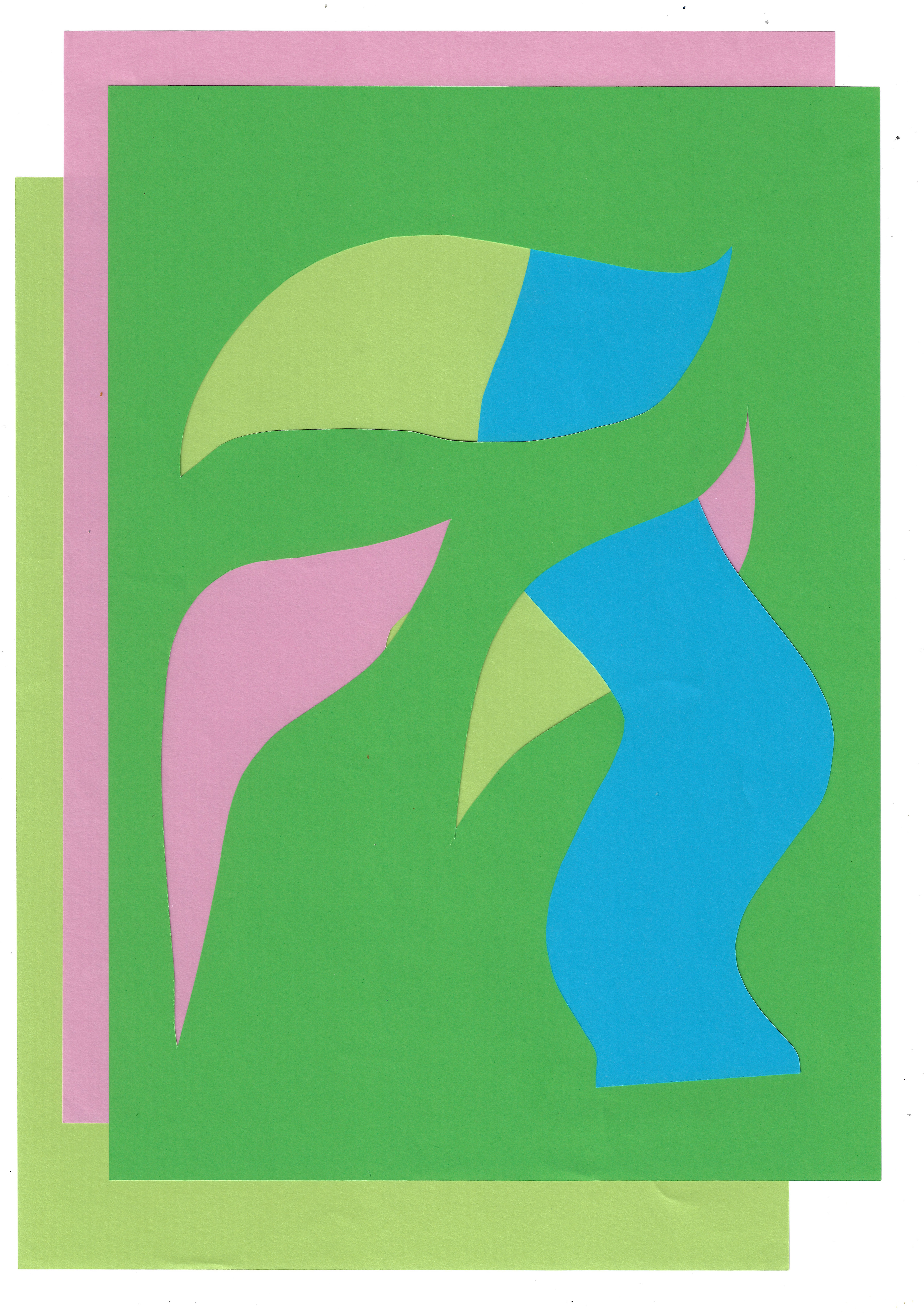A chronological development of my work. Click on the image to enlarge the work.

Pen on paper, 21 x 29.7 cm

Pen on paper, 21 x 29.7 cm

Pen on paper, 21 x 29.7 cm
Observational drawing of a leaf. I split the leaf into three different visual components and assigned a different colour for each part; I employ a different drawing technique for each different visual component. I documented the image after each stage, building up the image in different layers.
The tension is heightened as layers are added; dialogues begin to form between each of the different layers.

Pencil on paper, 21 x 29.7 cm

Pen on paper, 21 x 29.7 cm

Pencil on paper, 21 x 29.7 cm

Paper cut out, 21 x 29.7 cm

Pen on paper, 21 x 29.7 cm

Pen on paper, 21 x 29.7 cm

Pencil on paper, 21 x 29.7 cm

Pencil on paper, 21 x 29.7 cm

Pencil on paper, 29.7 x 42 cm

Paper cut out, 21 x 14.8 cm
I attended a life drawing class and I used techniques such as continuous line and holding two pens at once to emphasise the line. Focus on the line defining the form within the piece. I also make cut outs for some of the poses, which further draws attention to the function of the line in defining the form.
My interest is naturally drawn towards translating my surrounding environment. Individuality is prevalent in my use of line, as the viewer is made aware that the image is made from distinctly my point of view. The individual nature of my translations of natural forms will form much of the content of my work.

21 x 29.7 cm

21 x 29.7 cm

21 x 29.7 cm

21 x 29.7 cm

21 x 29.7 cm

21 x 29.7 cm

21 x 29.7 cm

21 x 29.7 cm

21 x 29.7 cm

21 x 29.7 cm

21 x 29.7 cm

21 x 29.7 cm

21 x 29.7 cm

25 x 35 cm

25 x 35 cm

25 x 35 cm
A collagraph of different natural forms found in my surrounding environment; I am limited in the scale of my work due to the inability to access the workshops, hence I only select small forms. These prints are made at home with the limited resources I have access to. I am exploring how print is a method of translation. The organic matter is reduced to its tactile elements on its surface, as this serves as the intermediary force which holds the ink. Through the process of printing the organic form is transformed into its tactile natural lines and shapes.

Monoprint on paper, 21 x 29.7 cm

Monprint on paper, 21 x 29.7 cm

Monoprint on paper, 21 x 29.7 cm

Monoprint on paper, 21 x 29.7 cm

Monoprint on paper, 21 x 29.7 cm

Monoprint on paper, 25 x 35 cm

Monoprint on paper, 25 x 35 cm

Monoprint on paper, 25 x 35 cm

Monoprint on paper, 25 x 35 cm
Further exploration of the role of line in the definition of form. Also exploring how this is emphasised through colour choice. Although I am limited in my colour range as I do not have access to a wide range of colours, I am utilising the simple concepts of creating colour harmony with basic colour ranges. These are through balancing:
Complementary colours (two colours directly opposite on the wheel)
A dyad harmony (a combination of two colours only separated by one colour on the wheel)
Split complementary (one colour paired with the two colours on either side of that colour’s direct complement)
Triad (a combination of three hues equally spaced from one another on the colour wheel)
Analogous harmony (two or more colours that are side by side each other on the colour wheel)
Double complement (two sets of complementary colours)
Rectangular tetrad (four colour harmony)
Square tetrad (four colours equally spaced apart from each other on the colour wheel)
Sketchbook page, 21 x 29.7 cm
Observational drawing of leaf. I colour it in by using the pencil in different directions to emphasise the texture and depth of the surface.














Create various arrangements of cut forms on my A3 flatbed scanner to imitate the randomness and unexpected combinations in printmaking techniques that I was exploring in the workshop, such as monoprint. However, there is not any colour mixing between the different layers, so the colour remains flat.
I create a film on my computer of one of the arrangements I made on my flatbed scanner. The image changes hue in the short film, making the different elements of the arrangement come into focus and appear more vividly in parts- stepping forward and stepping back. I envisage increasing the length of this film, but using a projector in a blank room, with no windows, to play this film. This prompts a dialogue between the viewer’s body as they enter the space with the shapes projected onto them and the space surrounding them, which also has the shapes projected onto it. The lines of the viewer’s body become synchronous with the lines in the surrounding environment.
Monoprinting using block stencils that I have drawn from natural forms. However, on reflection, the ink I used is too opaque. The colour should have been more transparent on the second layer, as this would allow the shapes and lines from the first layer to be more visible. This results in new, unpredictable lines and forms.

Monoprint on paper, 35 x 50 cm

Monoprint on paper, 35 x 50 cm
Collagraph, 75 x 56 cm
Collagraph, 75 x 46 cm
Collagraph, 75 x 56 cm
I collagraph a big fern leaf and explore the relationship between the scale and position of the work on a wall. Displaying the work at eye level could prompt a subconscious conversation with the viewer exploring their lines of their own body. Also, investigating how the natural outline of the leaf and the lines within are translated through the printing process. The line of the outer silhouette is emphasised in the first print, with the lines within the plant only making an impression on the paper; they have no colour. The print of just the leaf focuses on the lines within the leaf and the lines raised within the leaf as they carry ink.

Screenprint on paper, 35 x 50 cm

Screenprint on paper, 21 x 29.7 cm

Screenprint on paper, 21 x 29.7 cm

Screenprint on paper, 21 x 29.7 cm

Screenprint on paper, 29.7 x 42 cm

Screenprint on paper, 29.7 x 42 cm
![Screenprint on paper, 29.7 x 42 cm]](https://pro2-bar-s3-cdn-cf.myportfolio.com/8a5187d7-a4db-4a6b-9741-b5d7682e47a9/10f915a1-d4fd-416c-9c0a-fed0dbfc29cc_rw_3840.jpeg?h=beeaa6ee5d0b3cebc926a513145e72f2)
Screenprint on paper, 29.7 x 42 cm]
Screenprinting a block shape I created from the outline of an isolated part of a life drawing. The outer line of the image defines the shape of the form, but also it defines the negative space surrounding the form, creating two shapes.
Slightly offset the inner from the outer form. The positive and negative of the image are equal, there is no preference for one over the other. The line has defined them from one another, and this is emphasised through using two different colours for each shape.
I took pictures of single leaves from a birds eye view on a plain background. The lines within the leaves and the lines and shapes formed are emphasised through use of the minimal background.
Collagraph on paper, 59 x 42 cm
Collagraph on paper, 59.5 x 45 cm
Collagraph on paper, 38 x 53 cm
Collagraph on paper, 25.5 x 35 cm
Collagraph on paper, 29.7 x 42 cm
Collagraph on paper, 29.7 x 42 cm
I collagraph different types of leaves, looking at how the different types of leaves make different lines. I place the leaf on the plate as it naturally falls or lies, looking at the translation of the lines within the form through the process of print onto paper.
Sketchbook page, 21 x 29.7 cm
I draw the same leaf from different positions and do multiple drawings of single leaves, emphasising the texture within the leaf and the shape of the form through my mark making and use of line.

Pencil on paper, 21 x 29.7 cm

Pastel on paper, 21 x 29.7 cm

Pen on paper, 21 x 29.7 cm

Pencil on sketchbook page, 21 x 29.7 cm

Pen on paper, 21 x 29.7 cm

Pen on paper, 21 x 29.7 cm

Pencil on sketchbook page, 21 x 29.7 cm
I attend a life drawing class, focussing on the outline of the figure and the decisive line. Also, alternatively in other drawings from this session, I do not take my pen off the paper, producing one undulating line representing the whole form and lines within.

Monoprint on paper, 41 x 59.5 cm

Monoprint on paper, 41 x 59.5 cm

Monoprint on paper, 41 x 59.5 cm

Monoprint on paper, 21 x 29.7 cm

Monoprint on paper, 21 x 29.7 cm
Monoprinting undulating drawn forms, reproducing, and translating lines derived from shapes found in my observational drawings.
New lines are produced from the unpredictable combination of layering in monoprinting. I am unable to predict this combination because I cannot see the image before it is printed. The different lines combine on top of one another and subsequently create new forms. These lines represent the subconscious quality of thoughts that already exist in our minds unknowingly, but their combination is unpredictable to an extent, like the layering I am doing in monoprinting.

Screenprint on paper, 41 x 59.5 cm

Screenprint on paper, 41 x 59.5 cm

Screenprint on paper, 41 x 59.5 cm

Screenprint on paper, 21 x 29.7 cm

Screenprint on paper, 21 x 29.7 cm

Screenprint on paper, 21 x 29.7 cm

Screenprint on paper, 21 x 29.7 cm

Screenprint on paper, 29.7 x 42 cm

Screenprint on paper, 29.7 x 42 cm
I screenprint paper stencils of various undulating drawn forms. This process is much more predictable, as I can use acetate to anticipate the final image. However, there is an element of the unknown as I choose not to always pull the ink through consistently and evenly in every print leading to some irregularities. This highlights the material quality of the image. Also, because I have used paper stencils, these cannot be used again and so the squiggles are one off shapes.



I draw some varying large squiggles, and stick these up on the wall of the studio. I am looking at the relation between each other but also myself, as a viewer. This explores the effectiveness of the line communicating with the viewer and the relationship with distance and scale.
Sketchbook page, 21 x 29.7 cm
I draw a leaf, focussing on communicating the texture through my use of the pencil. This uses the pencil and its movement to translate the texture as well as the form.
I draw a found and crumpled leaf form without taking my pen off the paper, exploring how to convey texture through a thin, singular line. Rather than using multiple lines of a pencil, drawing all the leaf (and leaving no white space).
Sketchbook page, 21 x 29.7 cm
Pen on paper, 21 x 29.7 cm
Observational drawing of my surrounding environment, drawing natural forms of different textures and experimenting with a variety of different lines.
I photograph various different leaves and focus on the variation in the undulating lines occurring naturally.
I use isometric paper to create various undulating lines, experimenting with the variety of regulated lines.





I make boustrophedon and slotted zig zag structures, using isometric paper with drawn undulating lines, on both sides of the paper. New lines are connected and formed as they interact with each other.
I also use plain paper with observational drawing of leaves on to create boustrophedon structures. I play with the same principle of creating unexpected lines through creating these structures.







